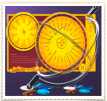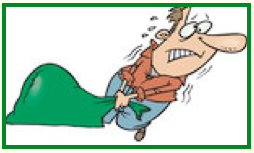 BEING ANGRY IS LEGITIMATE
BEING ANGRY IS LEGITIMATE
but hurting others is not
PREVIOUS: Ways to react #5
POSTS: What about anger?
ACoAs & Anger 
SITES: Pendulum & chart to identify anger style
Anger-EXPRESSIONS
Most people tends to use some or all of these mis-management styles at some point, depending on the situation & people involved. However, each of us chooses a preferred one (unconsciously & by family training) as our dominant pattern in daily interactions. So, just switching styles is not the answer – except for the HEALTHY form.
In addition to the standard list, now we’ve added:
COMPUTER: Anger/rage at either software or hardware that’s not working or too complex
INTERNET: Flaming emails, being flooded with spam, abusive texts, & lurking?….
TRANSPORTATION: Cutting someone off, tailgating, overt road-rage, drive-by shootings
NOTE: The following ancient story has to do with the harm we can inflict on others by our angry verbal & physical actions – NOT the harm in the emotion of anger itself.
ZEN STORY: There was once a young man who was as tired of his fits of rage as were those around him. He’d get mad at the most trivial things & then later apologize. The apologies stopped having any meaning because his behavior didn’t change.
He was convinced that his anger was ingrained, out of his control, & wondered why his loved ones couldn’t see that & accept him as he was. Finally one day he pleaded with his guru for help & enlightenment.
“Take a wooden board. Every time you get angry, drive a nail in it. Come back and let me know when the board is full.”
the board is full.”
The man followed the advice religiously. Before long, in just a few weeks, not a bit of space was left on the board – it was full of nails. He looked at it & felt ashamed. He went back to his master to report.
“Now, make a conscious attempt to control your outburst, & each time you succeed, take a nail out of the board. Bring back the board here when there are no more nails in it.”
He agreed, but this took much longer – many months in fact – to clear the board. Eventually he experienced a sense of control over his anger & felt relieved on seeing the plank cleared of nails. When he went back to the guru with empty board, he was told:
“Ah! I see you have cleared the board, but how dearly I wish you could restore it to its original state by somehow making these gaping holes disappear. The damage done in anger may be withdrawn – like first nailing & then pulling them out – however, it can never be undone. A mark will remain forever.”
IMP: This does not mean we eliminate the emotion, only change the way we express it!
NOTE: Here is the reference list for this blog ⬇️
NEXT: CATEGORIES (Part 1b)





